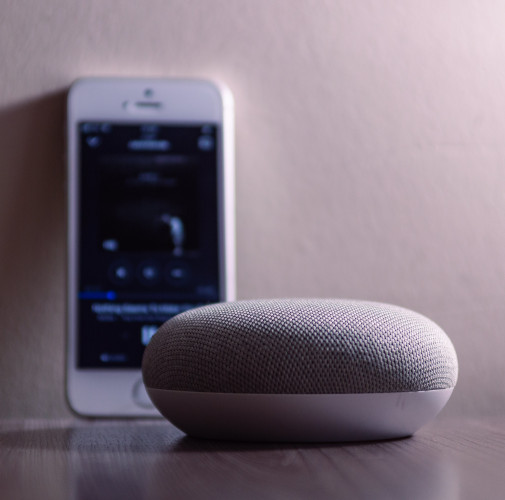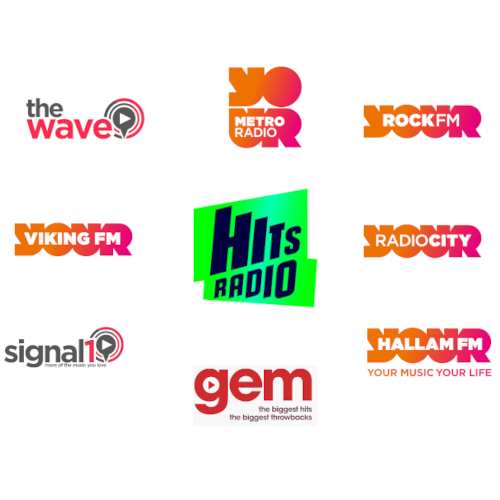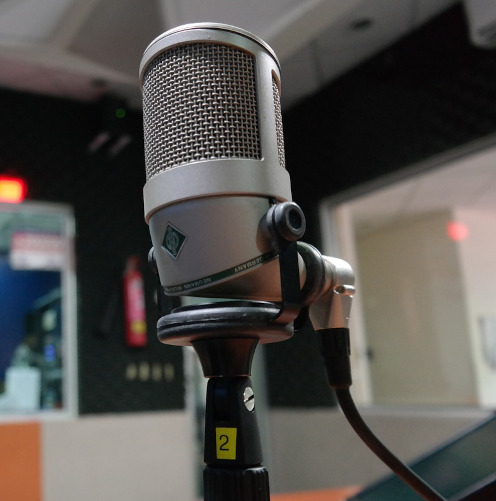
For the podcast market, like every part of life, 2020 was a year of dramatic change. As time at home gave us more time to consume audio, there was an explosion in podcast listening and the choice of titles we could consume. From history to football, from cooking to comedy, the choice grows daily. In fact, Apple now report that there are over 1m podcasts to choose from, and over the course of 2020 Spotify added 1.3m podcast episodes to their platform. More famous names are entering the market, joining a huge range of celebrities already established in the podcast space including Romesh Ranganathan, Gemma Collins, Gary Lineker and Dan Snow, bringing with them new audiences and further increasing choice.
Across the audio market, podcasts are becoming more important for publishers. Spotify have spent hundreds of millions of dollars on commercial rights and acquisitions within the podcast space to increase the choice of content and time spent on the platform. The BBC have put podcasts at the heart of their BBC Sounds app since its release 18 months ago, and Global’s own platform, ‘Global Player’, features a wide range of podcasts and original content from the likes of Paul McKenna, Lee Mack and Simon Thomas, alongside extensions of their radio brands.
After a year in which the podcast market changed and grew dramatically, we will now look at where 2020 took the podcast market and where we think it will go in 2021.
The Growth of Podcast Listening
Podcasting is not new. In fact, podcasts have been around for approximately two decades. But after a slow start, the last five years have witnessed an explosion of growth in the format. We now listen to almost 60 million hours of podcasts per week, which is double the amount we did three years ago. 18% of us are now listening to podcasts each week: that is 29% growth YonY and double the number from two years back. Five years ago, just 1% were listening each week. The growth in reach has been linear for the last two years, demonstrating a continued uptake in listening.

Lockdown was a key trigger for 2020’s growth in listening. As we entered lockdown 1.0, Acast were reporting 9m weekly listens on their platform but by September this had grown to 14m. Over the course of the year, Acast’s listening grew by 51% and on average people were listening to 45% more podcast episodes per month than they were at the start of 2020.

With more time at home and owing to the news agenda, there has been huge growth in the consumption of comedy, news and politics podcasts – as people seek both insight on current affairs and escapism. The growth in listening to food and drink podcasts also shows that people took 2020 as an opportunity to learn new skills and expand their horizons. Like radio, this is all opt-in media, people are exploring for new content delivered by people they respect, trust, and most importantly, choose to listen to.

Spotify
Spotify now owns a complete podcasting ecosystem: exclusive shows, a podcast player, podcast creation software and a hosting company. Much of Spotify’s recent strategy has surrounded the acquisition of podcast production houses and high-profile podcasts such as The Joe Rogan Experience, reportedly worth $100m on its own. Spotify’s podcast library has been bolstered by high-profile deals like its acquisitions of Gimlet Media, Anchor, Parcast and Ringer. Spotify is now the 2nd largest podcast listening platform in the UK with its share of hours having grown from under 20% in 2019, to just over 30% by the end of 2021.
In 2020, Spotify saw global consumption of educational podcasts grow by 81% from Jan to Nov 2020 versus the same period in 2019. There was also a 201% increase in health podcast listening for the same period. And through keenness to stay informed, there was a 140% growth in listening to news and politics podcasts.
There is already evidence that the growth looks set to continue. In the last week of January 2021, Global recorded 4.03m listens – their largest ever for a single week. This figure is 24% up month-on-month and 42% up YonY.
Plenty of Room for Growth
Despite this stellar growth, plenty of potential remains for further increases. Podcast listening still represents a relatively small chunk of overall audio listening. Radio dominates the audio landscape, with 69% share of all audio hours and podcast owning just 5%. For podcasts, the share of listening grows to 9% for 25-34’s but is still beaten by streaming services at 20% and radio at close to 60%.

Radio remains the main player in the audio market, but the growth of streaming and podcasts offers innovative ways of targeting people in immersive contexts. More on this to follow.
Listening by Age
The uptick in podcast consumption is heavily driven by younger audiences – with clear upward trends for the 16-44 age range. 42.8% of 16–34-year-olds have listened to a podcast in the last 12 months, and whilst overall listening share still lags far behind streaming and radio in particular, podcasts are clearly making in-roads.
Whilst the 45+ audiences have shown growth, this has been much slower and smaller in scale. Despite some signs that there may be growth amongst older audiences, just 9% of 55+ are listening to podcasts weekly.

With growth coming largely from younger audiences, podcasts are therefore another great way to target a younger demographic using audio.
Listening frequency
A rise in listening frequency is appearing alongside the overall podcast listening increase. 10.9% of adults said they listened to podcasts every day or most days in H2 2020, rising to 21.5% for 25–34-year-olds. This is up from 7.3% and 12.8% respectively in the same period three years prior. During H2 2020, 27.4% of adults listened to podcasts at least monthly, rising to 45.3% for 25–34-year-olds.

The slight dip in H2 2020 may be explained by the easing of lockdown restrictions in the summer of 2020, this dip also matches with the slight dip that Acast saw as we were allowed back out and about. It will be of interest to see how this frequency of listening is further affected as we are once again allowed out post lockdown 3.0, but with mobile being the most used platform for podcast listening we should expect consumption to continue to grow.
Where We Are Listening (7)
As to be expected with such an opt-in medium, most listening is done alone and the preferred location is at home, indicating that podcast listening is an accompaniment to relaxation time.

Device
Unsurprisingly for a medium so widely consumed alone, the smartphone is the preferred platform – with 73% using it monthly and 60% weekly for podcast listening. Acast report that 73% of overall listening is via headphones, ensuring that the listener is blocking out the world around them and providing the most intimate environment for commercial messaging.

The UK Podcast Listener (9)
So, people are listening more often and for longer, but who is this audience? 87% of podcast listeners are either light or non-commercial radio listeners, 66% have a premium Spotify account and 42% use an ad-blocker. This is therefore a valuable group of consumers, providing incremental reach to commercial radio but also providing us with an audience that are less likely to listen to other forms of audio. Of these:
- 39% more likely to have a bachelor’s degree
- 39% more likely to be in senior management
- 38% more likely to be in full-time employment
- 76% have acted on a brand message within a podcast
- 41% more likely to be business decision maker
- 134% more likely to be an early adopter
Source: Acast Listener Report 2019
Emerging Capabilities
Whilst listening has been growing, publishers have been working hard to ensure that commercial capabilities are being developed at pace. With this new growth has come additional scale that makes regional targeting more viable. 37% of listening still takes place in London but it is encouraging to see that more people outside the capital are now listening.
Dynamic Audio
Dynamic audio is now also a possibility within podcasts. This allows us to personalise ads in real times, based on factors such as location, device type and listening platform, in order to provide more relevant call-to-actions and run sequential messages to build a brand or campaign story. Taking this a step further, Acast are soon to launch ‘dynamic reads’. Using the same technology, the advertiser can run dynamic creative but in the context of presenter voiced sponsorships. This utilises the natural environment of the presenter read but with added personalisation.
Keyword targeting is yet another development. It allows the advertiser to curate their own custom collection of podcasts to advertise in, based on key words relevant to the brand. Conversely, this allows a brand to exclude themselves from any environments that they would not want to be associated with.
Reporting
Traditionally it has been tricky to measure the return on an investment in podcast advertising. Podcasters might know how many listeners downloaded a show, for example, but do not always know long someone listened, or, depending on the platform, whether they listened to ads. Strides are now being taken to address these gaps.
Spotify’s proprietary ‘Streaming ad Insertion’ technology, added to their recent acquisition of podcast publishing and advertising platform, Megaphone, means that now ad spots can run in Spotify’s original and exclusive podcasts with more detailed reporting available. This reporting includes reach, frequency, creative performance, and completion rates by device.
Elsewhere, the News UK and Bauer Media joint venture, ‘Octave’, has just announced that it will be offering attribution tracking in its campaign reporting. This is a welcome development that will be able to provide further detail on campaign effectiveness, future learnings, and guidance on how we can improve, moving forward.
2021 Outlook
With more releases and stronger targeting options the podcast market is in fantastic shape, allowing brands to talk to new consumers and find incremental reach beyond radio and streaming services. Podcast advertising revenue is expected to grow by 36% in 2021 to an expected total revenue of £44m. By 2024, total revenue is expected to reach £75m.
2021 promises to yet another stellar year for the podcast market. If you would like to understand more about how podcasts can work for you then please get in touch.
Sources
Spotify Wrapped 2020
Spotify Q420 Earnings Release
Acast Streaming Figures
Mediatel Connected; The Who, What, Where, When and Why of Podcast Listening
Audience One 18th – 24th January 2021
YouGov
Charts
1, MIDAS: RAJAR/Ipsos MORI/RSMB; All Adults 15+
2, Acast Streaming Figures Jan-Sept 2020
3: Acast Streaming figures Jan-Dec 2020
4, MIDAS: RAJAR/Ipsos MORI/RSMB; Spring 2020; All Adults 15+
5, Source: Mediatel Connected Screens
6, YouGov
7, Source: MIDAS: RAJAR/Ipsos MORI/RSMB; Spring 2020; All Adults 15+
8, Source: Mediatel Connected Screens; H1 2020; All adults
9, Acast Listener Report 2019



